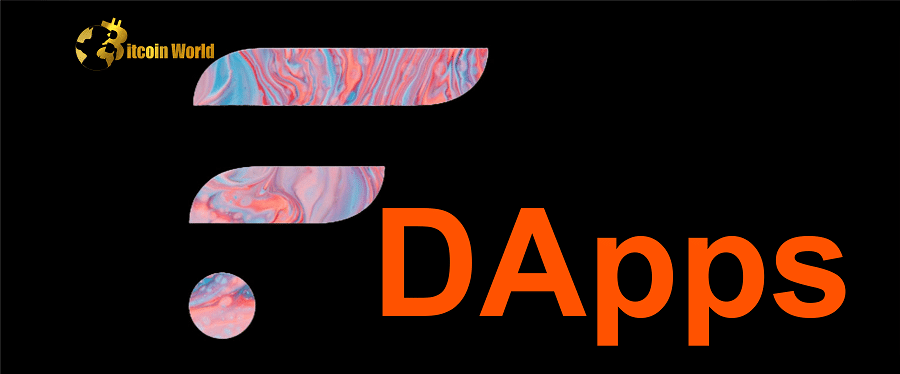Exciting news for the blockchain world! Flare, a brand-new Layer-1 blockchain built on the Ethereum Virtual Machine (EVM), has officially launched. What does this mean for you? Think of a world where different blockchains can effortlessly talk to each other, unlocking a universe of possibilities for decentralized applications (dApps). That’s the vision Flare is bringing to life.
What Makes Flare Different? The Power of Interoperability
Flare isn’t just another blockchain; it’s designed from the ground up to be an oracle network. This means it acts as a bridge, allowing developers to create dApps that can interact with various blockchains, traditional internet platforms, and online services. Imagine building a dApp on Flare that can trigger actions based on real-world data or events happening on other chains – that’s the power Flare unlocks.
Meet the Core Technologies: State Connector and FTSO
Flare’s interoperability magic comes from two key protocols:
- State Connector: Think of this as a secure and scalable information highway. It allows smart contracts on Flare to access data and information from a wide range of sources, both on and off-chain. This opens doors for innovative cross-chain solutions that were previously difficult to implement.
- Flare Time Series Oracle (FTSO): Need reliable and decentralized price feeds for your dApp? The FTSO has you covered. It gathers and distributes price and data feeds directly to dApps built on Flare. Here’s how it works:
How FTSO Ensures Data Accuracy:
- Independent providers retrieve data from various sources, including centralized and decentralized exchanges.
- This data is submitted to the FTSO system.
- The system weighs the data based on each provider’s reputation (voting power).
- A median value is calculated, providing a robust and decentralized estimate.
- Data providers who submit values close to the median are rewarded, incentivizing accurate reporting.
Why Build on Flare? Key Benefits
So, why should developers consider building on Flare? Here are some compelling reasons:
- Seamless Interoperability: Connect your dApps to a wider ecosystem of blockchains and data sources.
- Leverage Existing Ethereum Tools: Flare’s EVM compatibility means you can use familiar Ethereum contracts and development tools.
- Secure Data Access: The State Connector and FTSO protocols prioritize secure and reliable data retrieval.
- New Possibilities for DeFi: Bring non-smart contract tokens to Flare and explore new DeFi applications.
Flare’s Dual Network: Songbird and Flare
Flare operates with two interconnected networks: Songbird and Flare. Both run the Ethereum Virtual Machine, allowing for the deployment of Ethereum-based smart contracts and applications. It’s important to note that while they utilize EVM, they function independently from the Ethereum mainnet.
Real-World Applications: What Can You Build?
The possibilities are vast! Here are a few examples of what Flare’s technology can enable:
- Cross-Chain Payments: Trigger a smart contract on Flare based on a payment made on a completely different blockchain.
- Hybrid Applications: Integrate data from traditional websites directly into your decentralized applications.
- Enhanced DeFi Protocols: Bridge assets from non-smart contract platforms for use in decentralized finance.
The FLR Token Airdrop: A Milestone for the Community
The launch of Flare was accompanied by a significant event: the airdrop of 4.27 billion FLR tokens to millions of users. This airdrop, which commenced on January 9th, marks a crucial step, empowering developers to begin experimenting with Flare’s EVM and data acquisition capabilities.
What’s Next for FLR Token Distribution?
The initial airdrop distributed 15% of the total public token allocation. The remaining tokens are planned for monthly release over the next 36 months. Interestingly, the exact method for allocating these remaining tokens will be decided by the community through a Flare Improvement Proposal (FIP.01), highlighting the decentralized nature of the project.
Challenges and Considerations
While Flare presents a promising future, like any new technology, it faces potential challenges:
- Adoption Rate: The success of Flare will depend on developer adoption and the growth of its ecosystem.
- Security Risks: As with any blockchain, maintaining robust security is paramount.
- Complexity: Developing truly interoperable applications can be technically complex.
Actionable Insights for Developers
Interested in exploring Flare? Here’s how to get started:
- Explore the Documentation: Dive into Flare’s technical documentation to understand the intricacies of the State Connector and FTSO.
- Experiment on Songbird: Utilize the Songbird network, Flare’s canary network, to test and refine your dApps in a live environment.
- Join the Community: Engage with the Flare community to learn from others and stay updated on the latest developments.
Conclusion: A New Era of Interconnected Blockchains
The launch of Flare’s Layer-1 EVM blockchain marks a significant step towards a more interconnected and interoperable blockchain future. By providing developers with powerful tools like the State Connector and FTSO, Flare is paving the way for a new generation of decentralized applications that can seamlessly interact across different blockchain ecosystems and the wider web. Keep an eye on Flare – it has the potential to be a game-changer in the blockchain space.
Disclaimer: The information provided is not trading advice, Bitcoinworld.co.in holds no liability for any investments made based on the information provided on this page. We strongly recommend independent research and/or consultation with a qualified professional before making any investment decisions.


